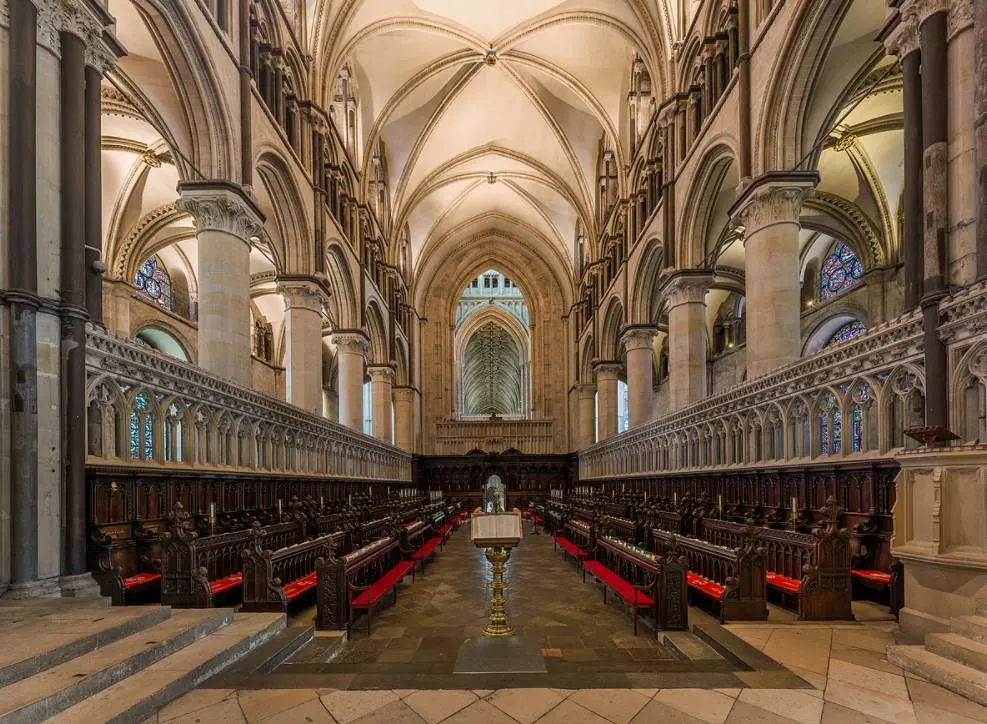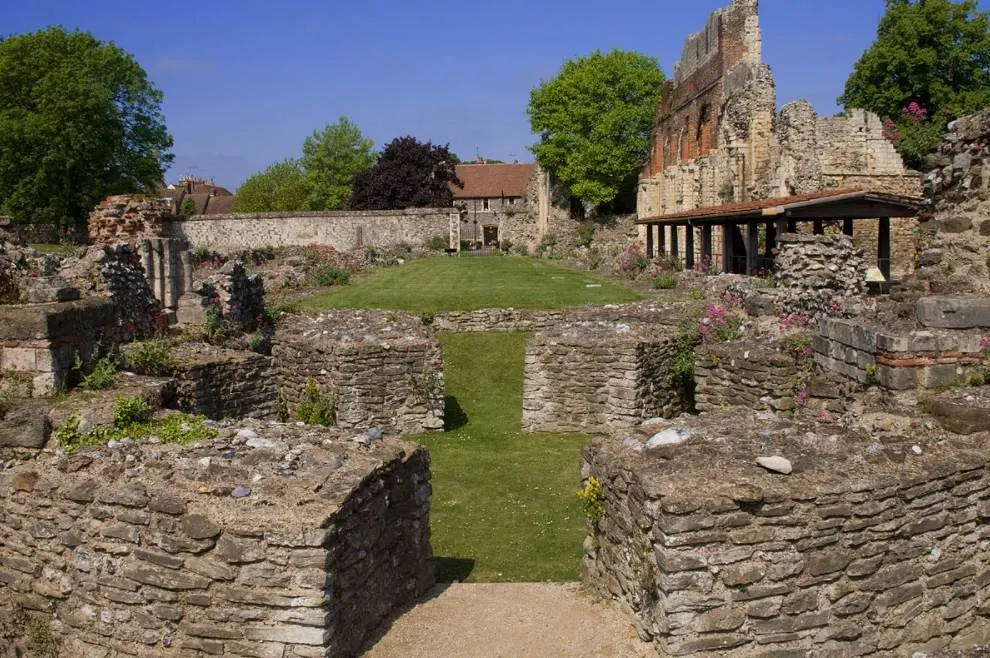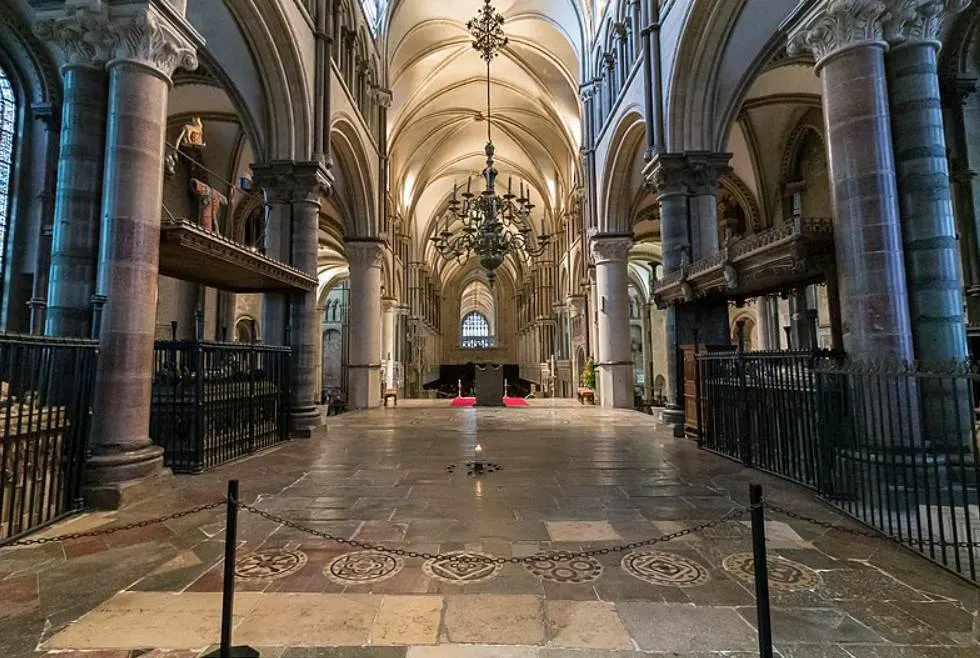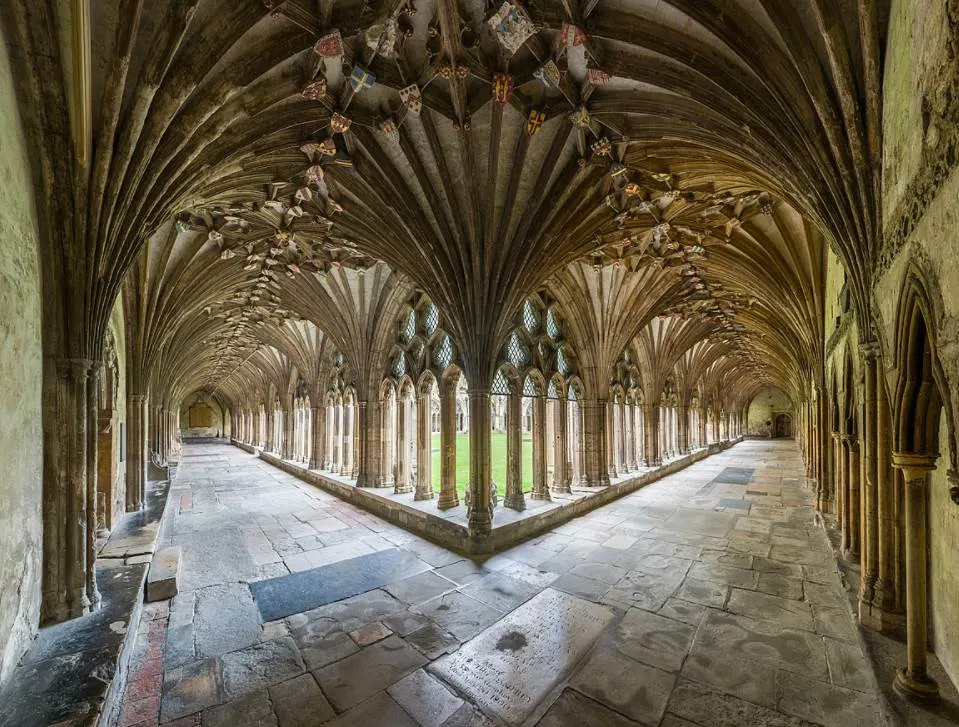One of the greatest religious structures in the United Kingdom can be found in a county in the southeast of England.
In this article, we’ll take a closer look at some of the most interesting facts about Canterbury Cathedral, an amazing Gothic church with an extended history.
1. The cathedral was founded in the 6th century
Canterbury Cathedral is located in the city with the same name in the county of Kent. This is situated in the utmost eastern part of South East England.
There was an existing ancient British town located here when the Romans arrived here in the 1st century A.D. Thye didn’t have much trouble capturing it, though, and renamed it “Durovernum Cantiacorum.”
Christianity didn’t take off until the early 4th century, a time when Constantine the Great ruled over the Roman Empire. He eventually converted which was an event that helped to spread the word.
The cathedral was founded in the year 597, shortly after a monk named “Augustine of Canterbury” was sent here by Pope Gregory I as a missionary. He subsequently became the first archbishop of Canterbury.

2. It was rebuilt following a fire after the 11th-century Norman Conquest
The first version of the cathedral was a lot more humble than the massive structure you can see in the city today. It was initially believed that the structure was a converted Roman temple, but no evidence to support this theory has been found yet.
When a team of archaeologists started digging in 1993, they uncovered the foundations of an Anglo-Saxon building instead of a Roman one. It featured a nave and side chapels but ended up being replaced by a much larger structure in the 9th and 10th centuries.
While still far away from the monumental building we see today, it had resectable dimensions of 49 x 23 meters (161 x 75 feet) and featured a large square tower in the center.

3. The cathedral wasn’t completed in its current form until 1834

The Norman Conquest of England started in 1066 and the Anglo-Saxon cathedral was destroyed by fire just a year after in 1067. The first Norman archbishop was an Italian man named Lanfranc and he commissioned the construction of the Cathedral starting in the year 1070.
One of the most impressive features during this initial construction phase was the choir, an element that was completed following the destruction of the original version between 1174 and 1180.
The cathedral underwent numerous reconstruction and expansion phases over the following centuries, lasting until the year 1834. This was the year that the northwest tower was demolished and replaced with a perpendicular-style tower that resembles its bigger brother on the southwest side.

4. The structure features 5 towers and was built at a monumental scale
The result of centuries of construction is quite magnificent and huge as well. The stats of Canterbury Cathedral are as follows:
- Length: 160 meters (525 feet)
- Width: 47 meters (154 feet)
- Nave length: 54 meters (178 feet)
- Choir length: 55 meters (180 feet)
- Towers: 5
- Highest tower: 72 meters (236 feet)
If we compare the structure with the largest Gothic Cathedral in the world, Seville Cathedral, then we find out that the cathedral is longer than its counterpart in southern Spain.
That cathedral has a length of 135 meters (443 feet) but is a lot wider at 100 meters (330 feet).

5. It’s a UNESCO World Heritage site and a popular tourist attraction
Canterbury was designated as a UNESCO World Heritage site in the year 1988. The UNESCO designation also applied to 2 other structures located nearby called St Augustine’s Abbey and St Martin’s Church.
The latter is the oldest church in England while the Abbey of St Augustine was established around the same time that the cathedral was founded in the late 6th century.
Together, these remarkable historical monuments have become some of the most popular tourist attractions in South East England make Canterbury a must-visit location if you plan to travel to Kent.

More interesting facts about Canterbury Cathedral
6. Being an archbishop at Canterbury was quite a dangerous job. Throughout its history, 5 archbishops were brutally murdered, the first one way back in 1012.
This was the year that Archbishop Ælfheah was murdered following Danish raids that started in 1011. The early version of the cathedral was heavily damaged during this period as well.
7. One of the most notable events in the history of the cathedral was the murder of Archbishop Thomas Becket by knights of King Henry II. This murder happened on December 29, 1170, in the northwestern transept of the cathedral.
The king supposedly said, “Will no one rid me of this turbulent priest?” This phrase was taken a bit too seriously by 4 of his most loyal knights, resulting in the second murder of an archbishop in the cathedral.
8. Following this brutal murder, a new section was added to the cathedral called the “Trinity Chapel.” It was here that the shrine of Thomas Becket stood, the reason why Canterbury turned into a popular pilgrimage in the following centuries.
This shrine was eventually removed in 1538 and all the treasures were confiscated by King Henry VIII. Today, a candle marks the spot where the shrine once stood.

9. The cathedral is officially called the “Cathedral and Metropolitical Church of Christ at Canterbury.” That’s because the archbishop of Canterbury is also the leader of the Church of England, the third-largest branch of Christianity after the Catholic Church and the Eastern Orthodox Church.
What’s remarkable is that the official residences of the archbishop of Canterbury are both Lambeth Palace in London and the Old Palace in Canterbury, just located near the cathedral in the city.
10. Before the English Reformation in the 16th century, the cathedral was also part of a monastic community of Benedictine monks. This means that there are a large number of adjoining buildings that served as the residence of the monks staying here.
These buildings include a dormitory, chapels, an infirmary, and cloisters. The dormitory alone had dimensions of 44 by 7.6 meters (145 by 25 feet).

11. Even though the central tower of the cathedral, the highest of all 5 towers, was originally a Norman structure, it was completely rebuilt at the end of the 15th century.
This tower is often referred to as the “Angel Steeple,” mainly because a gilded statue of an angel once decorated one of its spires.
12. Even though the cathedral looks just fine at first sight, it’s crumbling. The stonework has been damaged by centuries of weathering, the roof leaks, and just about all of the lead in the roof needs to be replaced.
That’s the main reason why an appeal was launched called “Save Canterbury Cathedral” in October 2006. By May 2014, over £20 million had been raised and major renovations were conducted.
The entire project is managed by a registered charity called the “Canterbury Cathedral Trust.” This means that the cathedral is in good hands and will end up being completely restored to its former glory.

